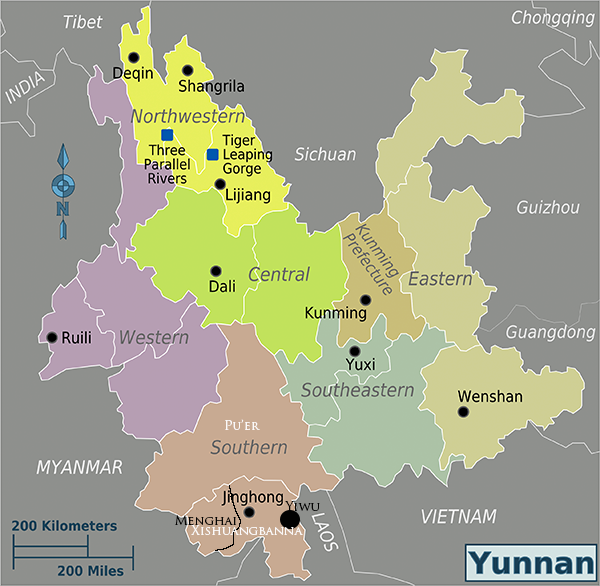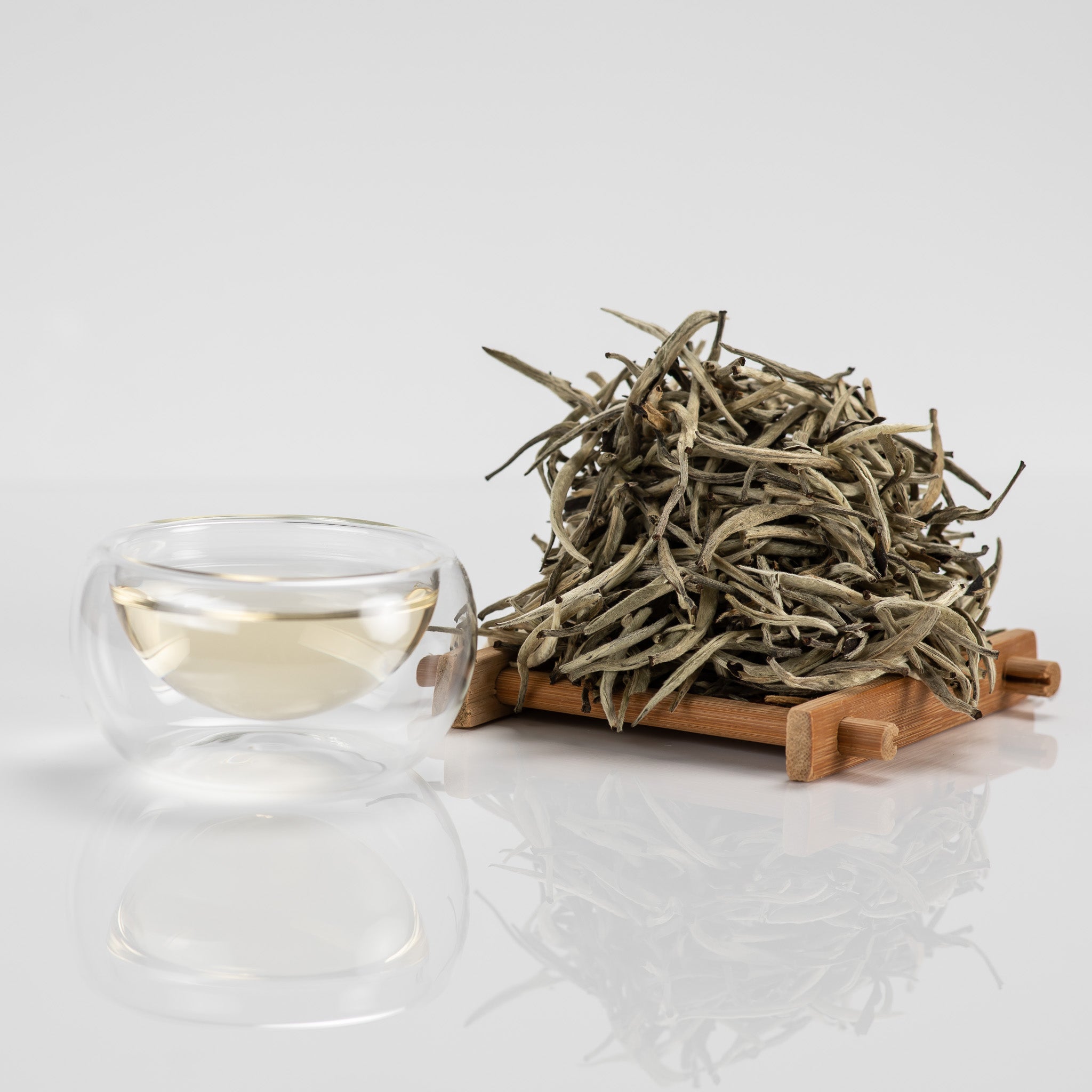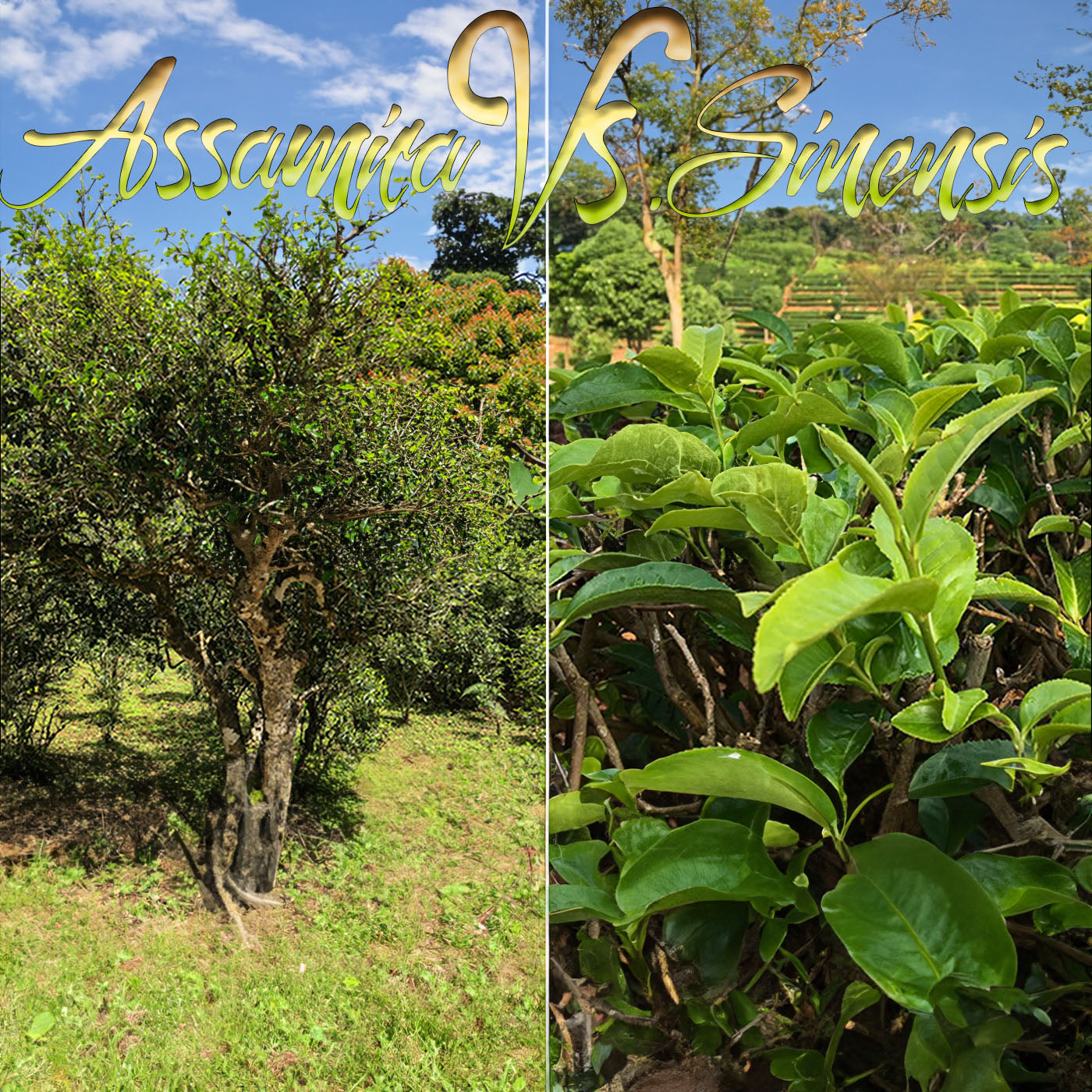About Single Estate TeAS
Single estate tea refers to tea leaves that are grown in a specific, uniform environment, typically within the boundaries of a single tea garden or region. This means that all the tea leaves come from the same tea trees, which are managed and planted uniformly, and are grown under the same conditions in terms of climate, altitude, soil, and water. The result is a pure and consistent taste and aroma in the tea, with a distinct mountain flavor that is unique to that specific region.
Each region has its own unique flavors and styles of tea, influenced by its specific growing conditions. For example, tea produced in the Menghai region in Yunnan Province, China, is known for its rich and mellow taste, while tea from the Yiwu region in Yunnan is softer and more delicate. These distinct characteristics make single estate teas highly sought after by tea connoisseurs who appreciate the purity and uniqueness of the flavors they offer.

Picture credit (map of Yunnan): commons.wikimedia.org.
Single estate teas are also prized for their traceability and transparency, as the tea can be directly traced back to the specific garden or region where it was grown. This ensures a higher level of quality control and allows consumers to have confidence in the authenticity and origin of the tea they are purchasing.
On the contrary, the practice of mixing tea leaves from different tea gardens and regions, whether it is organic or non-organic, can have a significant impact on the quality of the tea produced. When tea trees are planted and managed in different environments, it can result in variations in aroma and taste. This, in turn, can lead to adverse effects on the the overall quality of the tea.
Large tea companies often do not own exclusive tea gardens, or the gardens they do own may have limited production quantities. As a result, they may purchase tea from surrounding tea farmers on a large scale and at low prices. This can result in a lower quality product, as the tea from different sources is mixed together without consideration for its individual characteristics.
In order to make a living, tea farmers may resort to using pesticides and chemical fertilizers in their tea gardens to increase their harvest. This can have detrimental effects on the safety and quality of the tea. When mixed together with tea from other sources, the resulting product may not meet the standards expected of a high-quality tea.
The practice of mixing tea leaves from different sources without regard for their individual quality and production methods can lead to an inferior product that is potentially unsafe for consumption. It is important for consumers to be aware of these practices and seek out teas from reputable sources that prioritize quality and sustainability.

Pure loose tea, with its 100% natural tea flavor and intact tea leaves, stands as a testament to the unadulterated beauty of this timeless beverage. In a world filled with chopped mixed tea, where artificial flavors and unhealthy additives have become the norm, pure loose tea offers a refreshing alternative.
The natural aroma of pure loose tea is a result of its unaltered structure, with no need for additional spices, flowers, fruits, or any other materials. This ensures that the true essence of the tea shines through, providing a genuine and unadulterated experience for the discerning tea enthusiast.
In contrast, many mainstream teas on the market today are a blend of chopped mixed tea, where various additives are used to enhance the visual appeal and flavor profile. While these teas may appear and smell delightful, the true quality and hygiene of the tea are often questionable. Furthermore, the addition of artificial fragrances and unnecessary additives can pose potential health risks for consumers.
As consumers, it is imperative to make informed choices when it comes to tea selection. By opting for pure loose tea, we can enjoy the authentic taste and aroma of natural tea while also prioritizing our health and well-being. Let us choose purity over artificiality, and revel in the true essence of this beloved beverage.
Herbal tea, often referred to simply as "tea" in everyday conversation, is a popular beverage enjoyed for its relaxing and soothing properties. However, it is important to note that herbal tea does not actually contain tea leaves or caffeine and is therefore not considered a true tea in the traditional sense. In fact, herbal teas are not included in the six major categories of Chinese tea, as they are not derived from the Camellia sinensis plant from which all true teas originate.

True tea, or Camellia sinensis tea, comes from two main varieties of the tea plant: the shrub-type (Camellia sinensis var. sinensis) and the arbor-type (Camellia sinensis var. assamica). The shrub-type is primarily cultivated in China, while the arbor-type is commonly found in regions such as Yunnan Province in China, as well as in Southeast Asia, including India and Sri Lanka.
It is important to understand the distinction between herbal teas and true teas, as they offer different flavor profiles, aromas, and health benefits. While herbal teas are prized for their natural and often therapeutic qualities, true teas contain unique compounds such as catechins and theanine, which are known for their potential health-promoting properties
Unique Terroirs Attributes
The unique mountain scent of tea leaves from the same production area is a result of the natural environment in which the tea trees are cultivated. This fragrance encompasses the essence of the mountains, including the rocks, earth, flowers, trees, fruit, sunlight, and the aftermath of a refreshing rain. Standing among the tea gardens, one can experience the harmony of nature, with butterflies and bees fluttering about, warblers singing in the trees, and the soothing sound of chirping frogs. The breeze carries the scent of wildflowers and leaves, creating a captivating aroma that can be sensed in the tea soups produced from these leaves.
The distinct mountain scent of tea leaves is a reflection of the specific region in which the tea is grown, influenced by factors such as climate, altitude, water source, soil composition, and the variety of tea tree. The natural laws governing the growth of tea trees are paramount, with minimal external interference, ensuring the pure and unadulterated essence of the tea.
When brewed, tea from the same production area will emanate the unique mountain scent that is characteristic of that specific environment. The more natural the environment in which the tea trees grow, the more pronounced the aroma of the tea, resulting in a cup of pure and mountain-scented tea that allows one to immerse themselves in the beauty of nature with every sip.

Arbor-type tea trees (Camellia sinensis var. assamica)
Arbor-type tea trees, known for their towering height and thick trunks,
are a common sight in the virgin forests of Yunnan, China.
These tea trees can reach heights of several meters or more than 10 meters, making them an impressive and integral part of the region's biodiversity. The main trunk of the tea tree is thick and sturdy, and the branches extend high into the forest canopy. Their majestic height not only adds to the natural beauty of the landscape but also serves a practical purpose for the harvesting of tea leaves.
During the tea harvest season, local women, particularly from ethnic minority groups in Yunnan, are tasked with climbing the tall trees to carefully pick the tender leaves. This tradition has been passed down for generations and requires skill and agility to navigate the ladders and navigate the branches. It is said that in ancient times, monkeys in the region were also known to assist in the harvest of tea leaves, showcasing the unique relationship between humans and nature in this deep mountain forest.
Arbor-type tea trees not only contribute to the tea production in the region but also have cultural significance, as they are an integral part of the daily lives and traditions of the people of Yunnan. The towering presence of these trees in the forest symbolizes the deep-rooted connection between nature and the local communities, making them an important and cherished aspect of the landscape.


Shrub-type tea trees (Camellia sinensis var. sinensis)
Shrub-type tea trees, which originated from arbor-type tea trees, have evolved to adapt to different climates and environmental conditions. Originally spreading from southern China to northern China, arbor-type tea trees gradually transformed into shrub-type tea trees due to the varying climate and topography of the regions they inhabited. These shrub-type tea trees are often found in the tea areas along the Yangtze River Basin and the hilly areas of Jiangnan region in China.
The transformation of the arbor-type tea trees into shrub-type tea trees is a result of their adaptation to lower temperatures and drier conditions. As a result, the tea trees have become dwarfed with low, numerous branches and dense buds. This morphological transformation has enabled these tea trees to thrive in their respective environments while providing an ideal cultivation option for tea production in the region.
Furthermore, the size of the leaves of the tea trees is closely related to their classification. The smaller size of the leaves is a characteristic feature of the shrub-type tea trees and is closely associated with their shorter stature and suitability for cultivation in the hilly areas of Jiangnan region in China.




